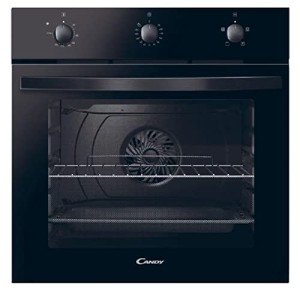In modern-day kitchens, the integration of home appliances is crucial to attaining a streamlined design. Amongst these devices, the built-in oven stands out as a staple for daily cooking. In particular, single built-in ovens are acquiring popularity due to their space-saving design and effectiveness. This article checks out the functions, advantages, and typically asked concerns about single built-in ovens, assisting homeowners make notified options.
A single built-in oven is a cooking device designed to be embedded within cabinetry, providing a smooth look that complements the kitchen's aesthetic. Unlike freestanding ovens, built-in versions offer a range of functions and styles that deal with modern culinary requirements.

Single built-in ovens included a variety of functions that improve performance and user experience. Here are a few of the most crucial attributes:
| Feature | Description |
|---|---|
| Size and Capacity | Typically ranges from 24 to 30 inches in width; ideal for various kitchen sizes. |
| Cooking Modes | Numerous settings, consisting of convection, baking, broiling, and sometimes steam cooking. |
| Controls | Digital touch controls or traditional knobs with accurate temperature level settings. |
| Self-Cleaning Options | Numerous designs include self-cleaning functions for much easier upkeep. |
| Energy Efficiency | Designed to take in less energy, frequently with an A+ energy rating. |
| Security Features | Consists of child locks, cooling systems, and temperature sensors. |
| Style Options | Available in various finishes (stainless-steel, black, and so on) and designs (modern-day, classic). |
The adoption of single built-in ovens uses various benefits:
A number of brands control the single built-in oven market, each offering distinct functions to accommodate consumer preferences. Here are some noteworthy ones:
| Brand | Popular Models | Key Features |
|---|---|---|
| Bosch | HBN8451UC, HBL8453UC | European design, convection heat, Wi-Fi connection. |
| Electrolux | E30SO75GPS, E30SO75PPS | Variations in size, advanced grilling capabilities. |
| Samsung | NV51K6650SG | Double convection, wise technology, flexible cooking modes. |
| Whirlpool | WOS51EC0HS | Cost effective, reliable, self-cleaning functions. |
| LG | LWS3063ST | Smart technology, air fry mode, streamlined aesthetic appeals. |
Setting up a single built-in oven includes particular factors to consider:
How much space is required for a built-in oven?
Can I install a built-in oven by myself?
Are single built-in ovens more pricey than freestanding designs?
What are the differences in between convection and regular ovens?
What upkeep is needed for a built-in oven?
Single built-in ovens represent a convergence of design, benefit, and efficiency in modern kitchen areas. With a variety of functions and designs available, these ovens deal with numerous cooking needs and choices. Whether you are an ambitious chef or a periodic home cook, acquiring a well-suited Single Built In Ovens (113.45.244.160) built-in oven can improve your cooking experience while elevating your kitchen's visual. Cautious consideration of functions, installation requirements, and upkeep will cause a rewarding investment in this necessary kitchen home appliance.

No Data Found!

